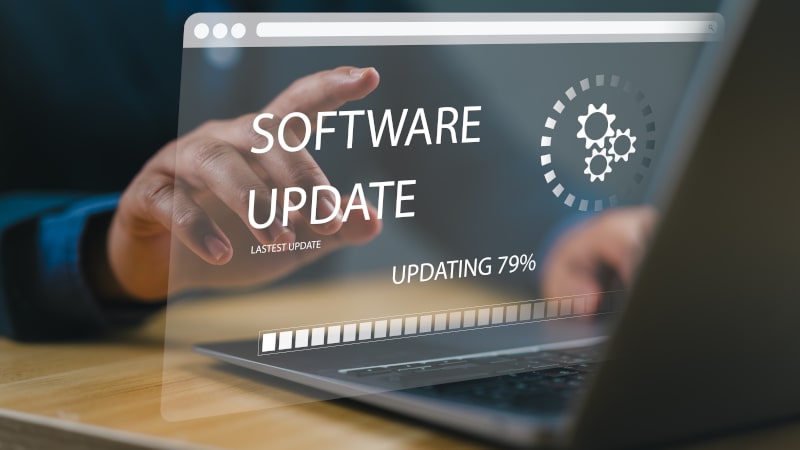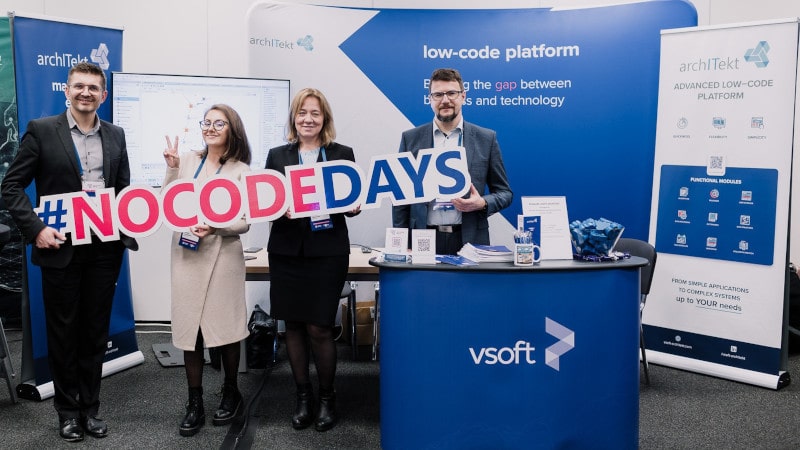We are pleased to announce that we have joined the group of partners of MCSC Hospital Leadership Innovation. This is an important step for us in advancing the digital transformation of healthcare, where technology directly impacts patient safety and quality of care. 🔹What does this partnership mean? As a Silver Partner, we support the development and promotion of innovative medtech solutions. We also bring our expertise and low-code technology, offering our proprietary platform VSoft archITekt. archITekt enables fast creation and expansion of IT systems tailored to the specific needs of hospitals and other healthcare organizations. It allows flexible process adaptation, task automation, and secure, cost-effective data integration. 🔹Why does it matter? MCSC Hospital Leadership Innovation is an international collaboration platform that connects hospitals, startups, investors, and technology leaders to jointly test and implement solutions that improve patient care and streamline hospital operations. ...
Tag: low-code applications
Limited access to medical services is one of the greatest challenges facing modern healthcare. Long waiting times, overworked staff, and poor information exchange between facilities often mean that patients wait weeks for diagnosis and treatment.
The key to solving these issues is digitalization — electronic medical records (EMR), telemedicine, and centralized patient data can greatly improve the system’s efficiency. But for these changes to succeed, healthcare needs flexible and fast-to-implement IT solutions.That’s where low-code technology comes in — but how exactly can it help modernize healthcare?
Transforming Healthcare Facilities
According to the World Health Organization (WHO), digital technologies improve the quality and efficiency of medical services. Low-code platforms play an increasingly important role by enabling the rapid deployment of tailored IT solutions.Such systems can integrate disparate applications and scattered data, improving information flow. As a result, physicians can ma...
We are proud to continue our partnership with the Faculty of Geology, Geophysics and Environmental Protection at AGH University of Krakow (WGGIOŚ). Once again, the faculty has entrusted us with supporting the education of its students.This year, our collaboration will expand to include two groups of students participating in the course “Current Issues in Applied Computer Science.” This means even more future IT professionals will have the opportunity to gain valuable, real-world experience.As part of the program, students will receive access to the VSoft archITekt low-code platform — an advanced tool for building modern IT solutions. Together, we will create a dynamic learning environment where participants can combine theory with practice, developing skills that go far beyond the classroom.Using intuitive drag-and-drop techniques, students will learn how to quickly build simple applications as well as design complex, enterprise-class systems. The course will help them master visual application design,...
We are excited to welcome Everest Finanse IT to the network of VSoft SA Partners, joining the group of companies that are driving innovation by building modern systems on the VSoft archITekt low-code platform. This partnership marks another important step in advancing cutting-edge technology within the financial services industry.
The mission of Everest Finanse IT is to deliver software that not only meets but anticipates client expectations — addressing real business needs and market challenges. With its extensive expertise in system design, programming, and integration, the company develops products that combine high functionality with ease of use.
Driving innovation for Bocian Pożyczki
Everest Finanse IT will leverage the archITekt platform to design and develop a new system for the well-known financial brand Bocian Pożyczki.The project sets ambitious goals, focusing on automating key processes and significantly increasing operational efficiency.
Building a Low-Code Competence Center
This is just th...
User and business needs are constantly evolving — and so is our system. The VSoft archITekt platform has been continuously improving for years. 2024 brought breakthrough updates that not only simplify users’ everyday work but also take the application’s aesthetics and ergonomics to an entirely new level. Here are the most important ones:
1. Independent creation of application themes
A new mechanism allows you to define your own application theme directly in the browser. Thanks to a visual editor, you can customize colors, fonts, margins, borders, and other visual aspects of pages and components. The theme is stored in the application’s configuration, making version management easy.
2. Expanded styling capabilities
New options have been added, including:
Custom headers and footers.
Using images as container backgrounds.
Precise control over spacing, margins, and container behavior.
Improved menu customization for mobile devices.
3. UX and web application appearance updatesThe transition to the Kendo ...
We are proud to announce that VSoft SA has become the Strategic Partner of the upcoming NoCodeDays 2024 conference! This is the largest event in Poland bringing together low-code and no-code technology enthusiasts. It offers a unique opportunity to exchange experiences, gain insights, and build connections in the world of innovation. The conference will take place on November 18-19, 2024 in Warsaw, at EXPO XXI. Our team has prepared numerous attractions – two inspiring presentations, a hands-on workshop, and a competition at the VSoft booth with unique prizes! Conference highlights include:Presentations led by VSoft experts Paweł Marchewka and Remigiusz Babicz, who will showcase the capabilities of the low-code platform archITekt for process automation and business operations optimization.A workshop led by Mateusz Wesołowski, guiding attendees step-by-step on how to use archITekt to create algorithms, data structures, and make business decisions – all in an intuitive, graphical interface without any c...
If you have an idea for an application or system and aim for a swift market entry to gather user feedback promptly, it is worth considering constructing a Minimum Viable Product (MVP) using a Low-Code platform. In this post, we will delve into five reasons why leveraging this innovative methodology in the application development process is advantageous.
What is MVP?
MVP, or Minimum Viable Product, is defined as an application containing the minimum set of features necessary to initiate a business or cater to end-users. Restricting the number of application features is aimed at abbreviating the time required for its launch, often leading to significant cost reductions in deploying the initial application version.
Building software demands increasing flexibility and speed. Consequently, many companies opt to construct a Minimum Viable Product (MVP) using low-code platforms.
Why Develop MVP with Low Code?
1. Time and Cost Efficiency
Utilizing a low-code platform enables the efficient and rapid creation o...
Implementing a low code platform within an enterprise can present a unique approach that differs from traditional methods or, surprisingly, share similar aspects. This applies to both off-the-shelf solutions and custom solutions provided by external vendors. The key lies in comprehending and effectively leveraging the capabilities and concepts of the low code platform.
Engaging Citizen Developers in Low Code Platform Implementation
One crucial aspect of such solutions, which sets them apart and holds significant importance, is the ability to actively involve business users like analysts, product managers, or users in the software development process. This allows them to contribute actively to the creation process, distinguishing low-code solutions from traditional approaches where a clear separation exists between programmers and business representatives.
A similar distinction also applies to the utilization of IT specialists. Traditional approaches predominantly focus on skilled programmers, whereas low...
With technological advancements and increasing business requirements, more companies are embracing low-code tools. Process automation has become essential for most companies in 2023, and low-code tools enable faster and more efficient application development. This technology enhances departmental productivity and streamlines business processes. Therefore, low code workshops provide an excellent opportunity for companies to test the tool, understand its capabilities, and learn effective platform usage.
Creating Applications for Non-Programmers
The VSoft archITekt tool offers ready-made components, modules, and templates, along with an intuitive graphical interface. Users can design business models, create forms, and define business processes clearly. However, beginners often find it overwhelming due to the numerous options and switches available. To address this, we have organized online workshops that navigate through the tool using specific examples. These workshops allow participants to familiarize themse...
Is it possible to easily automate the complex process of generating large numbers of highly complex and multi-variant documents? Especially in cases where each document has to contain personalised information and be delivered to the customer in a paper version?
Let's look at how such a process might work using the example of the Bank's handling of debt collection cases.
Debt collection in a bank
Every bank daily launches hundreds of actions related to unpaid loan instalments or unauthorised overdrafts on an account. Already at the first stage of its debt collection activities, using soft methods, the bank sends reminders to its customers in the form of personalised text messages or emails, and then, in the absence of results, it sends appropriate reminders by registered letter containing information about the overdue liability and legal sanctions. In the next stage of debt collection, e.g. field collection, the bank, proposing an amicable solution to the case, produces further documents containing a sett...









